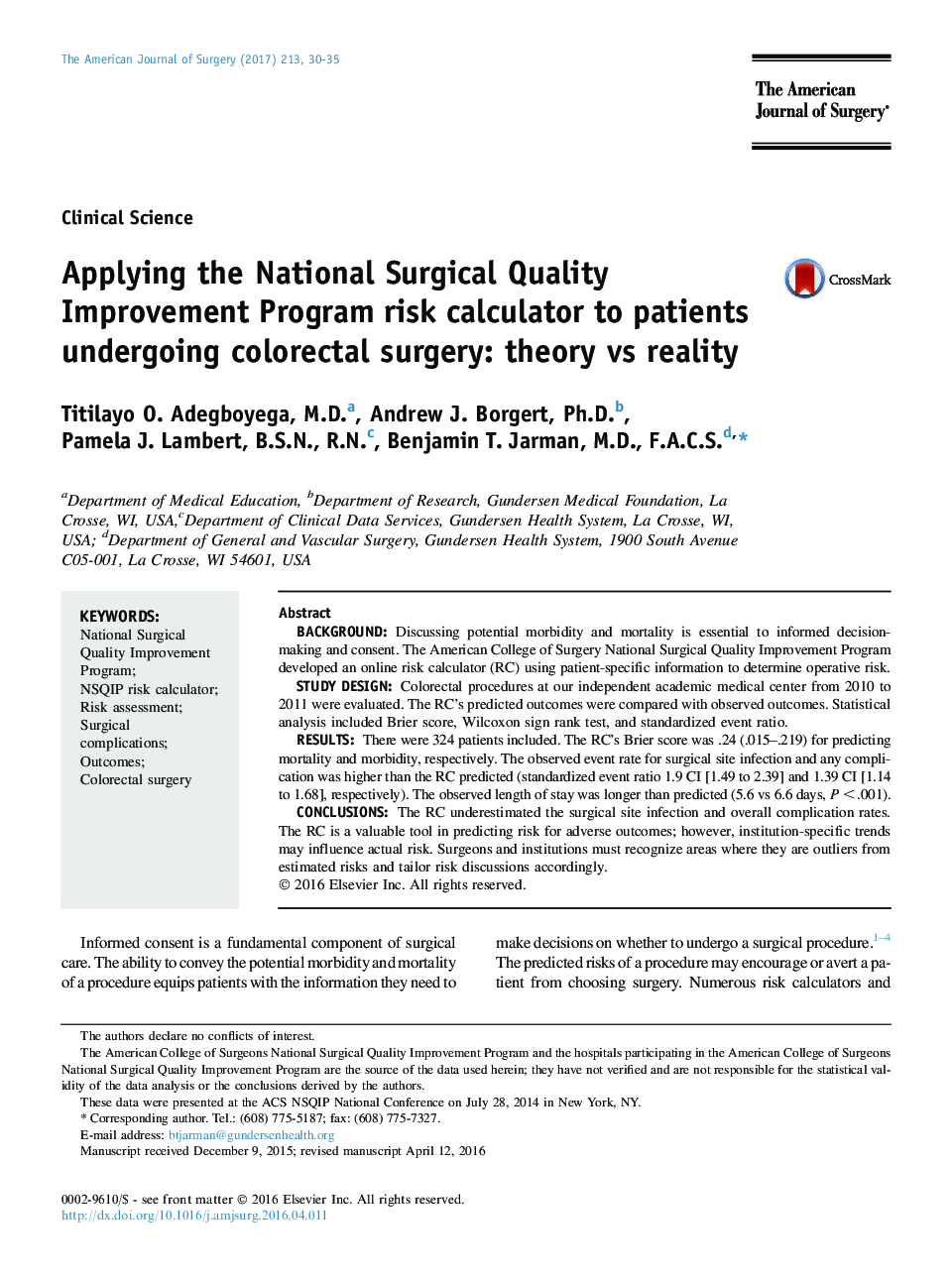| Article ID | Journal | Published Year | Pages | File Type |
|---|---|---|---|---|
| 5731160 | The American Journal of Surgery | 2017 | 6 Pages |
â¢The NSQIP risk calculator (RC) estimates risk to improve decision-making.â¢RC outcomes were compared to observed outcomes for colorectal procedures.â¢The RC underestimated SSI, overall complication rates, and length of stay.â¢The RC is a valuable tool in predicting risk for adverse outcomes.â¢Institution-specific trends may influence actual risk.
BackgroundDiscussing potential morbidity and mortality is essential to informed decision-making and consent. The American College of Surgery National Surgical Quality Improvement Program developed an online risk calculator (RC) using patient-specific information to determine operative risk.Study designColorectal procedures at our independent academic medical center from 2010 to 2011 were evaluated. The RC's predicted outcomes were compared with observed outcomes. Statistical analysis included Brier score, Wilcoxon sign rank test, and standardized event ratio.ResultsThere were 324 patients included. The RC's Brier score was .24 (.015-.219) for predicting mortality and morbidity, respectively. The observed event rate for surgical site infection and any complication was higher than the RC predicted (standardized event ratio 1.9 CI [1.49 to 2.39] and 1.39 CI [1.14 to 1.68], respectively). The observed length of stay was longer than predicted (5.6 vs 6.6Â days, P < .001).ConclusionsThe RC underestimated the surgical site infection and overall complication rates. The RC is a valuable tool in predicting risk for adverse outcomes; however, institution-specific trends may influence actual risk. Surgeons and institutions must recognize areas where they are outliers from estimated risks and tailor risk discussions accordingly.
